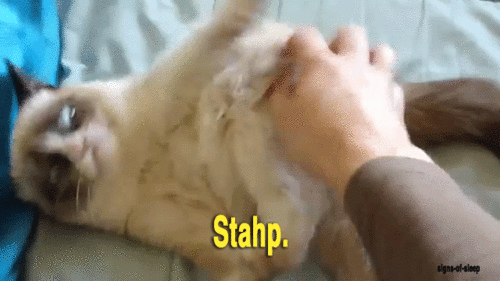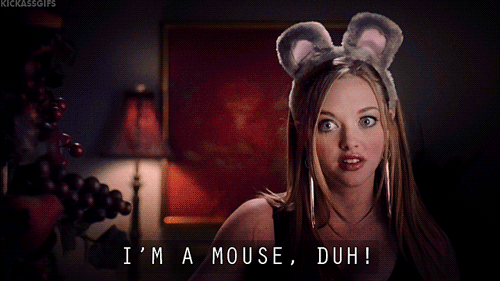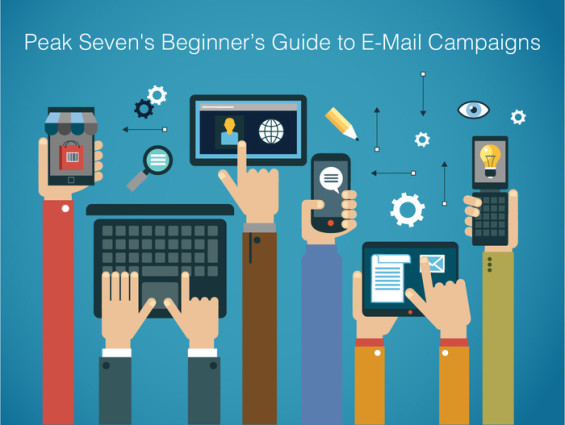Social Media
September 5, 2014
We decided to have a friendly pushup contest one morning at Peak Seven HQ: designers vs. Darren. Who won? Check out the contest by clicking here!
August 29, 2014
Thanks to iScrap App for nominating Peak Seven for the ALS Ice Bucket Challenge! The purpose of the ALS Ice Bucket Challenge is both to raise money AND to raise awareness. According to the ALS Association’s website, Amyotrophic Lateral Sclerosis (ALS), also known as “Lou Gehrig’s Disease,” is a progressive neurodegenerative disease that affects nerve cells in the brain and the spinal cord. When the motor neurons die, the brain cannot initiate or control muscle movement. With our new found knowledge, we nominate Tirso San Jose of SobelCo, Steve Myers and all of the Yatco team, and Tom Buechel from iScrap App for the ALS Ice Bucket Challenge! Peak Seven also donated to the ALS Association and encourage all of our clients and nominees to do the same!
Please visit http://www.alsa.org to donate to The ALS Association.
August 27, 2014
When I was in 4th grade, there was nothing I wanted more than a Geocities webpage to showcase my obsession with Sailor Moon (a popular Japanese anime show). Geocities pages were the perfect beginner webpages: they started free, and almost anybody could design a page to their liking. “Cool” webpages had tons and tons of images and not a lot of text. But webpages that really were worth sharing were the webpages that had your name in sparkling pink letters (thanks FlamingText.com), an “under construction” sign that flipped vertically, or a dancing banana. These moving or animated images are called “GIFs,” an acronym for “graphic interchange format.” After being MIA following the demise of MySpace and the rising popularity of limited design social media sites like Facebook, GIFs are having a renaissance. But like most things these days we have to wonder: are GIFs back for good, or is this just another Millennial fad?
GIFs made their official debut in 1987, hence the painfully outdated name of “graphic interchange format,” Almost immediately the GIF met controversy in a copyright war that lasted until 1994. The disagreement ended in the winning company licensing the GIF format to other companies for a fee. Most people didn’t want to pay, and ditched GIFs for the PNG format by 1996 – a free, non-patented single-image format. By the early 2000’s, time had passed: we survived Y2K, Britney Spears was America’s Sweetheart, and the GIF patent had expired. ربح المال من لعب الالعاب Enter Geocities and inexperienced Internet users.
Before MySpace and Facebook, there was Geocities, and what better way to express your limited HTML knowledge and trendiness than with a bunch of animated images? GIFs are compressed image files, meaning they could more easily load for people with modem connections and outdated web browsers. The ease of loading GIFs made GIFs accessible for people of all Internet speeds and bandwidths. Remember, this is the time before we had YouTube, Vimeo, Netflix, and Hulu: accessing video files used to take hours! How people ever survived is a mystery to me. Somewhere around 2001, a flash music video for the song “Peanut Butter Jelly Time” featuring a pixelated, dancing banana took over the World Wide Web. The dancing banana went on to be one of the most popular GIFs of that time. After the Geocities craze came the next bigger and better Internet trend: MySpace. MySpace was hot for about four years and truly kicked off our dependence on social media. Other than constantly worrying about who should be in my Top 8, I know I was one of the millions of teenagers who spent far too many hours littering their MySpace profile with as many GIFs as humanly possible. قوانين البوكر Why did we love GIFs so much? They were new, shiny, fun, and added a little bit of quirk to an otherwise stereotypical MySpace page. Once Facebook eclipsed MySpace in users, GIFs died out because Facebook only offered, and still only offers, limited customization aspects on profiles. However, like most trends including Jelly sandals from the 90’s and unfortunately overalls, every trend gets a second-go, and now is the time for GIFs.
Today, thanks mainly to Tumblr, the home of many GIF-centric pages, we have GIFs for every situation, every reaction and every feeling featuring clips from TV shows, music videos, movies, YouTube videos, you name it. Furthermore, companies like Victoria’s Secret PINK, J.Crew, and Steve Madden are cashing in on the GIF trend by using their merchandise to create GIF images on their marketing emails. لعبة قمار For example, Victoria’s Secret PINK recently sent out an e-mail promoting their collegiate collection, featuring an image model with the pullover sweatshirt she was wearing changing every few seconds to showcase different colleges and universities. Steve Madden often features GIF images in their emails with rotating images of their latest and greatest shoes. Even K-Mart got on the GIF-train during the 2013 Holiday Season with a “GIFing Out” campaign. This campaign featured commercials of family members doing strange repeated movements after scoring great deals at K-Mart, to which the onlookers would remark that their family member was “GIFing out.”
GIFs have evolved greatly past pixelated images. In addition to having a GIF for any mood, we now have “cinemagraphs,” which feature still images with only a minor repeated detail moving. But what does this mean for the future of GIFs; are they here to stay, or are they another fleeting millennial fad? Kerry Trainor, CEO of Vimeo, stated, “We really feel like the GIF format overall really represents an interesting connecting tissue between what people typically think of as video and what people typically think of as still images… This is a new area of video creativity that we think bridges the gap between video and still photography.” With the attention span of users shorter than ever and the number of hours in a day ever dwindling, it is important for marketers to provide users with content that can be accessed quickly and easily. Sure, YouTube and Vimeo videos are great, but users’ time is limited, and watching a minutes-long video just takes up too much of their precious time. Not to mention buffer time! Enter the GIF – typically a few seconds long – short enough but to the point. Furthermore, GIFs can be instantly shared through social media, bypassing the inconvenience of having to click the play or pause button like on a YouTube video. Are GIFs the future of video? Will there one day be a social media site dedicated only to GIFs? As the popularity of GIFs continues to increase, I personally believe these are not such farfetched ideas.
So how can you jump on the GIF-train for your business? First, you can share GIFs across your social media accounts: be it Facebook, Google+, or even your blog. GIFs don’t always work on all social media platforms (Instagram and Pinterest for example) but they can help spice up your posts on social media platforms where they do. Whether you are sharing original, curated or repurposed content, GIFs can help tell your story with a little quirk and flare. Another way you can use GIFs for business is by creating GIFs that are centric to your work. In other words – don’t just use or make a GIF just to say you did. If you are using GIFs just to fit in or look cool, trust me, it’ll be painfully obvious. But when a GIF syncs with your brand or campaign, people will know who is responsible for that fun piece of content (you!). Email campaigns are another great outlet to create your original GIFs to market your latest and greatest products. As previously mentioned, Victoria’s Secret PINK has mastered the art of GIF marketing, as has Urban Outfitters. Lastly, if you are a website or blog that frequently posts a lot of tips or how-to’s, GIFs can be used as an educational resource. Showing your readers how to follow your tips step-by-step in a short, repetitive clip will help keep readers from second-guessing your directions, or leaving your page to turn to YouTube for help.
When words can’t say what you’re feeling or thinking, a GIF can. GIFs are like Hallmark cards for Millennials, except free and less compassionate. As consumers’ attention dwindles and patience is fleeting, I believe marketers will eventually have to be even more creative and find a quicker way to reach their consumers, and GIFs are the perfect medium. With GIFs, your creativity is limitless – the only real boundary is your mind, and maybe some copyright laws (watch out for those when using content lifted from movies, TV shows, and anything you don’t). Below are some of my favorite GIFs, and of course, I included the dancing banana. Long live Peanut Butter Jelly Time!
Source: http://mashable.com/2012/10/19/animated-gif-history
Source: http://www.business2community.com/content-marketing/7-best-practices-using-gifs-cinemagraphs-business-0939520#!bLjeQm
Source: http://www.businessinsider.com/most-popular-gifs-of-2013-2013-12
Source: http://victorious.wikia.com/wiki/File:Cupcake_dog_gif.gif
Source: http://img4.wikia.nocookie.net/__cb20070819174055/uncyclopedia/images/b/be/200px-Dancing_Banana.gif
Source: http://vspink.com
Source: http://www.urbanoutfitters.com
August 11, 2014
Last week, I visited the topics of basic content strategy and blogging. If blogging is your tortilla, then content is the filling – nobody wants to read a blog (or eat a burrito) without some tasty content. As I previously touched on, blogging and content creation are much easier when you set a content schedule. When you plan ahead, you ensure not only that you stay on track, but also that you are never without ideas for content. The next step is creating the content that ranks highly with search engines, and that’s where I’m picking up this week. Thanks to our friends over at CopyBlogger, I bring you your fresh weekly burrito: content creation with a side of salsa and sass.
An Overview of Your SEO Burrito
You know the age-old saying, “If a tree falls in the forest and no one’s there to hear it, does it make a sound?” Similarly in blogging and content creation, if you blog and no one read your content, are you relevant? The answer is no, in case you were wondering. That’s part of the magic of Google and Search Engine Optimization (SEO): connecting billions of people to billions of sources of information by only typing in a few words into a search bar. SEO is a website’s content’s relevance on search engine results.
What determines content’s relevance? The number of users finding the content “organically” or without a website using paid keyword search to appear at the top. “Organic” or “natural” search results typically represent a website that offers both meaningful and useful content for the majority of users searching keywords that website mirrors.
For businesses looking to make a real impact online, partnering with an SEO agency that drives results is essential. Agencies like those offering ecommerce seo services melbourne specialize in tailoring strategies that increase visibility and drive traffic, specifically for online stores. These services are invaluable for e-commerce businesses aiming to rank higher on search engines and reach potential customers.
From optimizing product descriptions to enhancing user experience, an expert agency can fine-tune every aspect of your website to ensure it’s aligned with best SEO practices. By leveraging such expertise, your online store can stand out in a competitive marketplace, attract more visitors, and ultimately increase conversions. It’s not just about getting noticed—it’s about being found by the right people at the right time.
Just as SEO ensures that your content reaches the right audience, the design and structure of your website play a pivotal role in making that content accessible and engaging. When it comes to website design, it’s not just about aesthetics or flashy elements; it’s about user experience and functionality. A well-designed website serves as the gateway for users to interact with your content, and if your website is hard to navigate or visually overwhelming, visitors will quickly bounce.
Ensuring that your website is easy to navigate, mobile-friendly, and fast-loading is just as important as having great content. With the right design, users can find what they need quickly, and this enhances both user engagement and your SEO efforts.
When it comes to business growth marketing, it’s not just about creating great content; it’s about ensuring that content gets discovered. This is where the power of SEO becomes a game-changer. With the right optimization strategy, businesses can increase their visibility and reach the right audience at the right time. Lexio Digital understands the importance of relevance in today’s digital landscape, helping businesses elevate their online presence and drive organic traffic. The combination of high-quality content and strategic SEO practices ensures that your business not only ranks well but also resonates with your target customers.
As businesses compete for attention online, the role of SEO becomes more critical than ever. By leveraging data-driven strategies and focusing on delivering value through content, companies can stay ahead of the curve. The key is consistency—updating your website, tracking performance, and adapting to the ever-changing search algorithms. Through a comprehensive marketing approach, businesses can enhance their brand’s authority, improve lead generation, and ultimately drive sustainable growth.
To achieve optimal results, many businesses turn to premium choices from letsgetoptimized.com, which specializes in boosting a website’s visibility through effective SEO practices. With their expertise, your website can climb the search engine ranks, ensuring that your content reaches a broader and more relevant audience. By focusing on key elements like content quality, backlink strategy, and technical optimization, LetsGetOptimized helps businesses stand out in a competitive online landscape. Their personalized approach to SEO not only drives organic traffic but also helps businesses build a stronger online presence that sustains long-term growth.
SEO doesn’t stop there: it is not limited to being found organically on Google, but also reflects social sharing, such as linking in blogs, tweeting, posting to Google+, sending to friends through Facebook chat, and the like. Because we are all emotional beings, we are compelled to share things that hit a chord, be it funny, sad, disturbing, or inspiring. The purpose of SEO is to help people find answers to the questions they type into search engines: the focus is on the value that certain websites or pages bring to consumers. While consumers must follow the yellow brick road of keywords to find their answers, there are many misconceptions about SEO, content creation, and keywords.
Content: The Protein
Compelling content is the meat (or beans if you’re vegetarian) of your burrito. You want your content to be useful for thousands of readers, not just you, and you want your readers to share your content with thousands of other readers. Though normally I don’t like to share my food, a great SEO burrito is something I would want to share with the world. Furthermore, when curating your content, it is important to remember one thing: you are writing for people, not for search engines. A common misconception is that truly great SEO content is ugly and littered with keywords and other unreadable mumbo-jumbo to trick search engines into ranking them higher. The truth of the matter is the best content is content that people can benefit from and easily read. Remember: search engines are not the ones sharing your content; people are. Search engines only help lead people to your content. Though there are many technical aspects to blogging and content creation, emotion should never be forgotten.
Keywords: The Salsa
As previously stated in last week’s blog, finding a niche for your content and blog is one of your first steps. Additionally, you must use the correct keywords and keyword phrases for your audience. Keywords are the salsas in your burrito, and you need to find the right spiciness that best suits your taste. You don’t want salsa that is too bland or too spicy for your tastes because then you can’t enjoy the burrito to its fullest extent. Similarly with keywords, if readers can’t find you using their search terms, then you won’t be relevant. Ideally, you want to be as specific as possible in your use of keyword phrases – if you’re too general or vague, you’ll be outranked by a high-traffic competitor. In other words, do your keyword research. It is smart to include variations of keyword phrases in the event a higher-traffic site on a particular phrase outranks you.
A common misconception about SEO is utilizing “keyword stuffing,” or using a certain keyword as many times as humanly possible to have your page rank highly on search engines. We can relate this to saturating a burrito with salsa: when your burrito has too much of a good thing, it falls apart. Google has algorithms that sniff out people who overuse keywords on their websites, and punishes them by essentially removing their ranking. Why? Because mindlessly using a keyword is not going to help the consumer find their answer: think of it as search engine spam.
Titles and Headlines: The Cilantro Rice
Headlines are your one shot to communicate to the consumer that you have all the answers to their question they just searched. They are the cilantro rice in your burrito, and influence the initial bite into a burrito. Some people don’t like cilantro (what freaks) and may decide they don’t want to eat the burrito. Similarly, a person may not be grabbed by your headline and surpass your article. However, you don’t want to overload your burrito with too much rice, just as you don’t want a super long and heavy title for your content. Furthermore, it is ideal to work your keyword phrase into it while remaining compelling and while also promising to answer their question. If you write a great attention-grabbing headline peppered with relevant keywords or keyword phrases, people could link back to you using just your headline, also called “anchor text.”
Link Building and Linking Out: The Guacamole
Link Building
When you’re the new kid on the block, you need clout, and as a new website or blog, you can get that clout by having older, popular blogs and websites link anchor to your website. How do the cool kids notice you, you ask? You write better than them, you make them look twice at your blog and go, “WOW! That person can write well! I want to link them to my blog!” This strategy is “link building,” and is obviously used to increase inbound traffic on the site or blog. Link building is the guacamole in your burrito, because who even wants a burrito without guacamole? It’s essential and boosts the burrito’s overall taste. Similarly, when you develop your clout as a smaller, newer blog with the help from older, more popular blogs, your search engine results improve, and you’re on your way to a higher ranking (or better tasting burrito). You can also link build by guest blogging on a more popular blog. By choosing to contribute to an already established blog, you can attract attention to your writing and in turn, your blog.
Linking Out
Similar to link building, “linking out” is defined as engaging readers and bloggers on other websites with your content or other relevant content. There are multiple ways to link out, including through your blog posts and on social media. However, the key is how you share it. As previously touched upon in last week’s blog, you want to engage social media influencers to read and share your content to build clout. Get the influencer’s attention and share your work, but don’t go about it in a spamming or obnoxious way, as you may get the wrong kind of attention.
Social Interaction: The Jalapeno Peppers
Search engines like to provide users with the newest, most-updated links as these are seen to be the most relevant. Search engines also like to know that you interact with other websites and social platforms (clearly this whole thing is a popularity contest). When you update your blog or website frequently, you are opening the social forum to anyone who stumbles upon your content. Staying active and encouraging social interaction is equivalent to the jalapeno peppers in your burrito – they give the taste a little kick and oomph. By encouraging participation, you develop your general website’s authority and open the floor for discussion. Free discussion also allows for opportunities for you to plug your related content, also known as older, previously written blog posts. Getting readers to stay on your website through related content is better for your page, allowing you to lower the bounce rate and keep around potential customers longer. Furthermore, never assume your readers know what you’re talking about, because if they’re just joining in for the first time, chances are they don’t. Linking to previous posts in blogs can convert your new readers to repeat readers.
Conversions: The Grande Finale
While seeing spikes in traffic can be a great indicator that you’ve created successful content (or a delicious SEO burrito), it should not be viewed alone as a measure of success. Chances are, you’re trying to sell something, which is why you created your content in the first place. Furthermore, a consumer likely landed on your page because they are looking to purchase what you are selling. Therefore, unless you see an increase in your sales conversions, then you cannot truly say your content is successful based on page views alone. Before you can even begin with your content campaign, it is crucial to know your base point in order to measure your successes.
How do you know when you’ve made a truly delicious SEO burrito? When you’ve combined the protein (compelling content), salsas (relative keywords and keyword phrases), cilantro rice (attention-grabbing headlines and titles), guacamole (link building and linking out), and peppers (social interaction). If you are selling more SEO burritos than you were a month ago thanks to some savvy new burrito content you’ve created, then you indeed are successful. Keeping these things in mind, do you think you’re ready to create your own SEO burrito? Or do you want to make a quick trip to Chipotle first? I’m kind of hungry!
July 25, 2014
We’ve heard that orange is the new black, 90’s fashion is back in style, and everybody’s juicing. These days it seems that everything we once knew to be true is being replaced by new and shiny trends. But does that mean social media is replacing email as the #1 direct marketing tool? According to CopyBlogger.com, no. We read their latest e-book “EMail Marketing” for further insight.
Trends may come and go, but some marketing foundations hold strong—email being one of them. While social media offers immediacy and viral potential, email still delivers when it comes to consistent engagement, personalized messaging, and ROI. That said, the most effective strategies today don’t rely on one channel alone. They weave together email, social, SEO, and content into a unified game plan.
To truly stand out in today’s noisy digital landscape, especially in specialized trades, you need more than a generalist—you need a flooring contractor digital marketing agency that understands your niche inside and out. From targeting property developers on LinkedIn to crafting email campaigns for repeat business and running geo-targeted ads that actually convert, niche experts can connect the dots between channels and speak your customer’s language. Because in marketing, relevance isn’t just important—it’s everything.
E-Mail vs. Social Media
The good news is that today email is still the #1 direct marketing tool. Even with the 1.13+ billion monthly users on Facebook, only 664 million of these people are logging onto Facebook on a daily basis – meaning that more than half of Facebook users are missing content and material in their newsfeed. The status update that you so cleverly crafted is buried after only a few moments under newer, more relevant information from other Facebook users, making it easy for you to miss your target audience.
Unlike Facebook, 9 out of 10 people check their email on a daily basis. That marketing eblast that you sent over the weekend to your consumer on vacation will still be there when they decide to check their email first thing Monday morning. But how can you ensure that people read your email?
Content is King
Providing your readers with valuable content is the MOST important aspect of email marketing campaigns. After all, why do you think they signed up for your newsletter? Don’t push your business onto the consumer. موقع رهان كرة القدم Don’t overload your emails with too much text or too much information. View your e-blasts or newsletters as a recipe for success for readers, and breakup said recipes into 7-10 steps. Each step should be valuable and be completed by itself so that readers can reach success through your campaign step-by-step.
Attention-Grabbing Subject Lines
You will need a good subject line to get your audience’s attention. Play around with different titles, and even push the envelope using words that can normally redirect your message to spam, as long as the content is truly valuable to readers (i.e. “Make Money Doing *Action Here*). The best subject lines are short and to the point and solicit a reader’s interest.
Segment and Engage Your Readers
Reader segmentation can ensure a successful email campaign. Not all readers should be treated equal. For example, if you have a lifestyle blog with an e-newsletter, some readers may only want to receive emails with content about restaurants and nightlife while others may prefer only fitness and health information. It is important to give your readers the option of what content they can receive, as well as the frequency.
Reader engagement is dependent on the time and day on which you send an email. Contrary to belief, there is no universal time or day of the week that is optimal. الرهانات Depending on your audience and multiple rounds of trial and error, you can engage what time of day and what day of the week results in the most opens, click-throughs, and sales. Tracking these aspects, your emails will help you determine the optimal time for your audience.
Tone Selection
You will also need to set your tone. Find a happy medium between casual and informative, as readers respond best to a friendlier tone. الكازينو You want your reader to feel as if they are a valued individual that is part of a community, not just another face in the herd. Encouraging social media interaction amongst the company and readers reinforces a sense of community, as does including customer testimonials.
Format for Mobile Devices
Formatting your emails to be friendly for mobile devices and tablets is crucial; this is “Responsive Design.” Nothing is more discouraging to the reader than opening an email, only to find a distorted text and images on their screen. While your reader may open the email, the click-throughs and conversions will not be nearly as high because they cannot engage with the content.
The Call to Action
Lastly, if you are seeking engagement from your readers, whether it is to download an e-book, buy merchandise, or to sign up for another email list, put your call to action button (CTA) at the bottom center of the email. This way, when the reader finishes with the newsletter, they can click and engage your CTA immediately.
Email is one of the most valuable assets a business has. Putting together an e-newsletter can seem daunting, but if you follow these simple guidelines, you are already setting yourself up for success. What are you waiting for? There are thousands of hungry readers waiting for your content!

-
150 East Palmetto Park Rd.
Suite 800
Boca Raton, FL 33432 - 561.465.3177
- www.peakseven.com
- hello@peakseven.com
-

-
in

-
621 Kalamath Street
Suite 135
Denver, Colorado 80204 - 561.465.3177
- www.bigfootweb.com
- hello@bigfootweb.com
-


-
Miami Lakes, FL - 561.465.3177
- www.ilumaagency.com
- info@ilumaagency.com
-

lest's Chat
Privacy Policy: By filling out and submitting this form, you are giving consent to receive communication from Peak Seven in the form of email, text, phone, and mail. Your data will only be used by Peak Seven. We will take all the steps reasonably necessary to ensure that your data is treated securely and that no transfer of your Personal Data will take place to an organization outside of Peak Seven's companies. We use cookies and similar tracking technologies to track the activity on our Service and we hold certain information. No method of transmission over the Internet or method of electronic storage is one hundred percent secure. We strive to use all commercially acceptable means to protect your Personal Data. You may unsubscribe at any time.









Privacy Policy: By filling out and submitting this form, you are giving consent to receive communication from Peak Seven in the form of email, text, phone, and mail. Your data will only be used by Peak Seven. We will take all the steps reasonably necessary to ensure that your data is treated securely and that no transfer of your Personal Data will take place to an organization outside of Peak Seven's companies. We use cookies and similar tracking technologies to track the activity on our Service and we hold certain information. No method of transmission over the Internet or method of electronic storage is one hundred percent secure. We strive to use all commercially acceptable means to protect your Personal Data. You may unsubscribe at any time.












